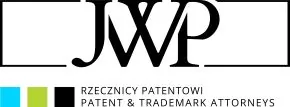Patent protection plays a key role in shaping the pharmaceutical market, affecting the availability of medicines, innovation in the design of new medicinal products as well as the development of innovative therapies particularly needed in the treatment of rare and chronic diseases.
The patent entitles the owner to the exclusive use of the invention for a certain period of time, in a commercial manner, on the territory of a given country. The term of protection for an invention is 20 years. It starts from the date of filing the invention with the Patent Office. Patent protection allows pharmaceutical companies to recover the costs of researching a new drug through a temporary monopoly on the sale and distribution of the innovative drug developed.
Generic and biosimilar drugs – an alternative after the patent expires
After the expiration of patent protection, other pharmaceutical companies may produce cheaper equivalents , i.e. generics or biosimilars, increasing their availability on the market. Generic medications contain the same active ingredient, the same dose, and the same therapeutic effect, but may differ in excipients, which in some cases may affect absorption or side effects. Thanks to lower production costs and the lack of expenditure on clinical trials, their price is definitely lower. . Unlike generic drugs, biosimilars are produced in living cells, hence they are not identical to reference (biological) drugs, but they show high similarity in terms of structure, effectiveness and safety to a biological drug already marketed in the EU.
Mechanisms to increase access to medicines
Access to medicines is therefore closely linked to the issue of patent protection and the balance between innovation and public health and the need to provide the public with access to medicines at the most affordable price. Early access to medicines can be achieved through compulsory licences, voluntary agreements or global funds and initiatives. A compulsory license is a legal mechanism that allows a state to authorize another manufacturer to produce a patented drug or vaccine without the consent of the original patent owner and thus bypass the legal monopoly of the patent holder. This mechanism is used in crisis situations, especially in epidemiological conditions (e.g. the COVID-19 pandemic) or in cases of excessive prices that limit the availability of therapy. Compulsory licensing or voluntary licenses granted to generic drug manufacturers in developing countries may help to increase the availability of medicines and vaccines, but these are not ideal solutions, as it is necessary to find a balance between protecting innovation and ensuring global access to necessary therapies or medicines.
Polish patent law has undergone significant changes in recent decades, adapting to European standards, especially in the field of patent protection of medicinal products, which must take into account the interests of, among others, manufacturers of innovative and generic medicines, governments and patients.
Polish drug regulations
In 2024, incentives were introduced in Poland to increase the national production of medicines. In addition, from 1 April 2024, the so-called list of Polish medicines for which patients pay 10% less in pharmacies, in the case of the production of a drug in Poland, or 15% less if the drug was made from Polish ingredients, began to apply. The success of 2024 was also the long-discussed list of drugs critical to the health and life of Poles, while there is still a lack of additional specific support for pharmaceutical companies for investments in the production of critical and orphan drugs. Direct support of the pharmaceutical sector is needed in the form of grants to build factories, production lines and develop innovation in this sector.
We are seeing the first results of the introduction of cheaper drugs produced in Poland, for example, the French company Servier decided to move the production of all reimbursed drugs to Poland.
Lack of drugs and dependence on supplies from Asia
Currently, the lack of availability of drugs applies to all types of drugs, but the biggest problem concerns primarily those without patent and generic protection. The lack of access to medicines is most felt by the general public in the so-called "flu season", when pharmacies begin to lack basic antiviral drugs. This is due to the fact that still 80% of active pharmaceutical ingredients (APIs) and intermediates, due to costs and less restrictive regulatory standards, are produced in India and China. Such solutions have led to the EU's dependence on API supplies from Asia, and thus resulted in the loss of the ability to independently produce finished medicines on European territory, which is a significant threat to public health.
EU pharmaceutical law reform in 2025
Due to the geopolitical situation and the availability of medicines, it is expected that 2025 will be a breakthrough year in terms of the reform of the EU pharmaceutical law, which may affect the development of research and the competitiveness of the European drug market. The launch of a European platform for monitoring drug shortages in Europe, including Poland, is planned for 2025. The introduction of a temporary marketing authorisation for medicines is also expected. This will allow certain medicines to be released for sale more quickly. Changes in the system of reimbursement of medical devices and regulations regarding their registration are planned, which may accelerate patients' access to new technologies. It is also necessary to increase the production of pharmaceutical substances in the EU and increase their market availability.
Shortening patent protection – effects on the market
In April 2023, the European Commission proposed a reform of pharmaceutical law, and on 10 April 2024, the European Parliament adopted the draft proposed legislation, introducing some amendments. Among other things, the Commission envisages shortening the basic period of patent protection from 8 years to 6 years. The aim of this change is to accelerate the introduction of cheaper generics and biosimilars to the market, which is to increase the availability of therapies for patients and reduce costs for health care systems, which may discourage investment in research and development of new drugs, especially in areas of unmet medical needs.
The basic period of so-called data exclusivity, starting from obtaining a marketing authorization for a drug, during which generic products cannot use the registration data of the reference medicinal product to obtain their own authorization, has been shortened from 8 to 6 years, however, manufacturers may extend it up to 12 years if they meet certain criteria. These included the availability of the medicine in all EU countries (24-month data protection extension), the development of a therapy for an unmet medical need (6-month extension), the conduct of comparative clinical trials (6-month extension) and the expansion of the therapeutic indications (12-month extension). The European Parliament has proposed a number of changes in these scopes and, for example, the basic period of data exclusivity has been extended to 7 years and 6 months, the two-year additional period of data exclusivity has been waived in the case of ensuring supply to all Member States where a marketing authorisation is in force. At the same time, the EP decided that the maximum period of data exclusivity, taking into account the possibility of its extension, may not exceed 8 years and 6 months in total. The changes proposed by the EP mean that the maximum period of regulatory exclusivity, if it remains in the current wording, will be 11 years and 6 months, 6 months longer than it is currently. Although the aim of these regulations is to stimulate innovation and accelerate access to generic drugs, there are concerns that in practice they may result in the extension of the monopoly on certain preparations, which may delay the introduction of cheaper substitutes.
The changes are also proposed for the Bolar exception, which allows generic drug manufacturers to start research on them while the patent protection or supplementary protection certificate (SPC) for originator drugs is still in force, so they can enter the market immediately after the expiration of this protection. It was clarified that entrepreneurs who are producers of generic drugs may also use data from research to obtain a reimbursement decision.
In addition, the Parliament added a provision that prohibits the use of patent linkages, i.e. proceedings in cases of marketing authorization of medicinal products and in cases of applying for reimbursement are to take place independently of the enforcement of patent protection. This protection cannot be considered as a basis for refusal, delay or withdrawal of decisions in matters of marketing authorization of the drug.
New regulations on antibiotics
Another change in the amendment to the pharmaceutical law is the incentive for enterprises in the form of vouchers for transferable exclusivity, in the case of the development of a new antibacterial agent that would be directed against multidrug-resistant pathogens. This type of incentive for entrepreneurs is to focus also on this aspect of therapy, because the resistance of bacteria to currently used antibiotics is increasing at a rapid pace. In addition, requirements for prescribing antibiotics are to be introduced, which are to reduce their use by 20% by 2030.
EU regulations on health technology assessment
Since January 2025, the EU regulation on health technology assessment has been in force, which aims to unify the process of verifying new drugs and innovative therapies across the EU. This is to streamline the registration process and shorten the waiting time of patients for modern treatment methods, at the same time making it easier for manufacturers to predict marketing authorisation procedures.
Changes to the list of reimbursed drugs in Poland
In Poland, at the beginning of 2025, the list of reimbursed drugs was updated, removing 235 preparations from it. This action was aimed at optimizing public expenditure on health and adapting the reimbursement list to the current needs of patients. Individuals using withdrawn medications should consult a physician to find alternative therapies.
The future of the pharmaceutical market
In the face of regulatory changes, price pressure and patent expiration, approximately 40% of life sciences companies plan to increase their R&D expenditures. It is also envisaged to increase the number of mergers and acquisitions as an adaptation strategy to the new market realities.
In conclusion, patent protection and drug availability reforms in 2025 focus on finding a trade-off between fostering innovation and providing patients with wider access to cheaper therapies. Both the new regulations and the actions of pharmaceutical companies will be crucial for the future of the pharmaceutical market in Europe. At present, the EU Council, whose position has not yet been announced, is in charge of the draft reform of the pharmaceutical legislation. One of the most important tasks of the Polish presidency, which began in January 2025, seems to be to continue and accelerate the work on this Reform. This is a challenge because the interests of the innovation sector and generic drug manufacturers are not consistent, as are the interests of individual Member States. But it is worth remembering that at the end of this difficult regulatory path is the patient and it should always be borne in mind that the aim of the reform is to provide better access to affordable therapy for residents of European countries and to ensure drug safety.
The content of this article is intended to provide a general guide to the subject matter. Specialist advice should be sought about your specific circumstances.



